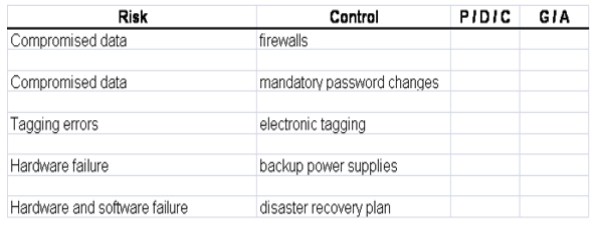XBRL creates risk exposures for organizations that use it; those risk exposures have to be addressed via various forms of internal control. As discussed previously in the text, internal controls can be classified by purpose (preventive / detective / corrective) and their relationship to the organization's information system (general / application). Consider the list of risks and controls below; for each item, indicate whether the control is primarily preventive / detective / corrective. Also indicate whether the control is a general or application control. 
Definitions:
Selling And Administrative Expenses
Expenses related to the selling of products and the management of the business, not directly tied to manufacturing.
Noncurrent Assets
Noncurrent assets are long-term assets not expected to be converted into cash or used up within one year, such as property, plant, and equipment.
Stockholders' Equity
The residual interest in the assets of a corporation after deducting its liabilities, representing the ownership stake of shareholders.
Working Capital
The difference between a company's current assets and current liabilities, indicating the amount of liquid assets available to run its operations.
Q9: Sylla and Wen suggested a three-stage process
Q18: Accounting information systems have five basic elements.
Q18: Bumble Beasley was recently hired as a
Q19: When organizations use XBRL, they can free
Q35: One of the steps in the generalized
Q36: Which category of computer crime in Carter's
Q39: List the steps in the accounting cycle
Q46: Based on a REA model, an accountant
Q54: CRX Corporation uses general ledger software as
Q55: YRC Corporation's operations had been limited to